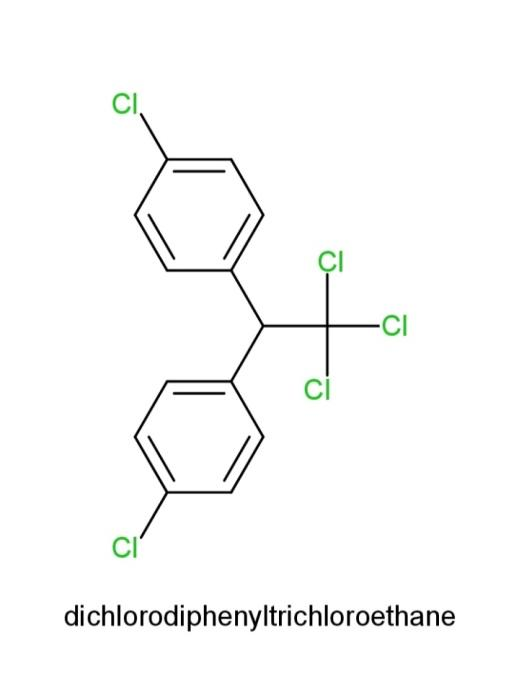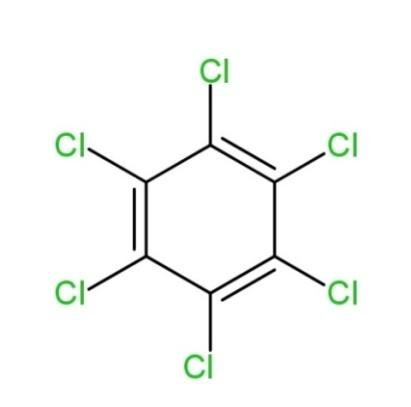
Write full form or name of DDT and BHC.
Answer
515.4k+ views
Hint: Organic compounds of haloarenes are used as important insecticides. Both of these organic compounds consist of chlorine combining with benzene. They both are very hazardous in nature and are banned in various parts of the world.
Complete answer:
DDT is a popular insecticide, it is chemically stable and not metabolized rapidly, and is stored in the fatty tissues. It is non – biodegradable in nature. Its structure consists of 2 phenyl rings having chlorine, attached together with a trichloroethane.
DDT stands for dichloro diphenyl trichloroethane, or $p$,${{p}^{'}}$- dichlorodiphenyltrichloroethane. The IUPAC name of DDT is 2,2 bis (4-chlorophenyl)-1,1,1-trichloroethane. Its structure is as follows:

BHC is also an insecticide, it is highly toxic. It is formed by the reaction of benzene with excess chlorine in the presence of sunlight. The reaction is a substitution reaction. BHC stands for benzene hexachloride. It is also called lindane, or gammaxane. Its structure consists of a benzene ring with chlorine atoms on all the 6 carbons. The structure is as follows:

Hence, DDT stands for dichloro diphenyl trichloroethane, and BHC stands for benzene hexachloride.
Note:
BHC is banned in various countries because it has been found to be a human carcinogen, which can spread cancer. Apart from the substitution reaction with sunlight, BHC can also be formed with chlorination of benzene using certain catalysts. DDT was used during World War 2 for preventing mosquitoes that spread malaria and typhoid. DDT is banned in US.
Complete answer:
DDT is a popular insecticide, it is chemically stable and not metabolized rapidly, and is stored in the fatty tissues. It is non – biodegradable in nature. Its structure consists of 2 phenyl rings having chlorine, attached together with a trichloroethane.
DDT stands for dichloro diphenyl trichloroethane, or $p$,${{p}^{'}}$- dichlorodiphenyltrichloroethane. The IUPAC name of DDT is 2,2 bis (4-chlorophenyl)-1,1,1-trichloroethane. Its structure is as follows:

BHC is also an insecticide, it is highly toxic. It is formed by the reaction of benzene with excess chlorine in the presence of sunlight. The reaction is a substitution reaction. BHC stands for benzene hexachloride. It is also called lindane, or gammaxane. Its structure consists of a benzene ring with chlorine atoms on all the 6 carbons. The structure is as follows:

Hence, DDT stands for dichloro diphenyl trichloroethane, and BHC stands for benzene hexachloride.
Note:
BHC is banned in various countries because it has been found to be a human carcinogen, which can spread cancer. Apart from the substitution reaction with sunlight, BHC can also be formed with chlorination of benzene using certain catalysts. DDT was used during World War 2 for preventing mosquitoes that spread malaria and typhoid. DDT is banned in US.
Recently Updated Pages
Master Class 12 Business Studies: Engaging Questions & Answers for Success

Master Class 12 Economics: Engaging Questions & Answers for Success

Master Class 12 English: Engaging Questions & Answers for Success

Master Class 12 Maths: Engaging Questions & Answers for Success

Master Class 12 Social Science: Engaging Questions & Answers for Success

Master Class 12 Chemistry: Engaging Questions & Answers for Success

Trending doubts
What is meant by exothermic and endothermic reactions class 11 chemistry CBSE

Which animal has three hearts class 11 biology CBSE

10 examples of friction in our daily life

One Metric ton is equal to kg A 10000 B 1000 C 100 class 11 physics CBSE

1 Quintal is equal to a 110 kg b 10 kg c 100kg d 1000 class 11 physics CBSE

Difference Between Prokaryotic Cells and Eukaryotic Cells




